Does your living room couch look old and worn out but you don’t want to replace it? Well, how about changing its upholstery then? Reupholstering the furniture is one of the easiest ways to revive it. Not to mention, purchasing common upholstery fabrics cost much less than buying a brand-new piece of furniture.
However, owing to a large variety of options available in the market today, a lot of people struggle with choosing the right fabric to reupholster the furniture in their home. In case you are also having trouble finding the perfect material to cover your furniture, we’ve put together a list of pros and cons of common upholstery fabrics that might come in handy. These are some of the most common types of upholstery fabrics used for sofas: leather, polyester, linen, cotton, olefin, velvet, silk, wool.
Leather
Leather is usually the first choice when it comes to choosing the most durable fabric for a couch. Available in the various shades of black and brown, even green and grey and some others, it is a widely used natural material that is synonymous with luxury, style and elegance. Not to mention, leather upholstered furniture easily fits into any theme, making it an ideal option for those who like to switch up their home décor every couple of years.
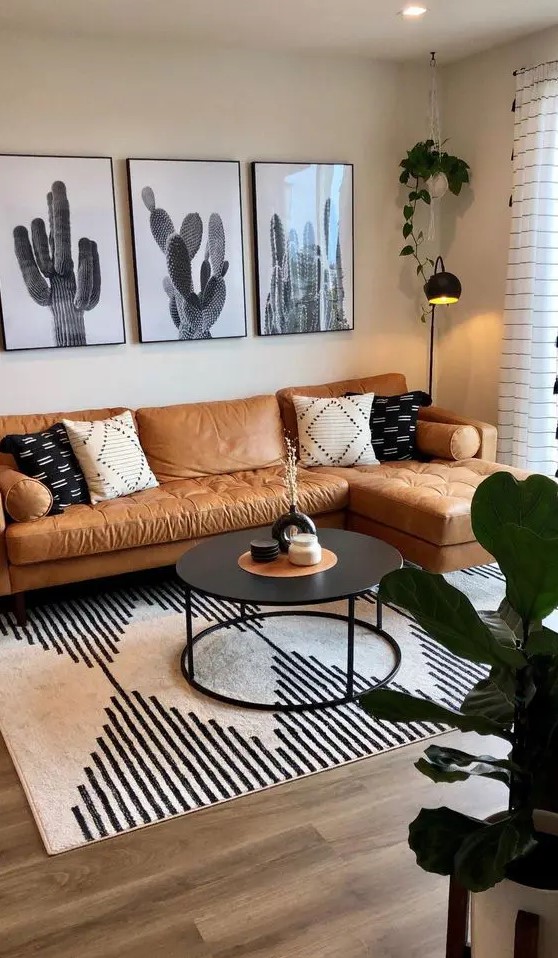
A boho living room with an amber leather sofa, a gallery wall, a black table, a printed rug and some decor.
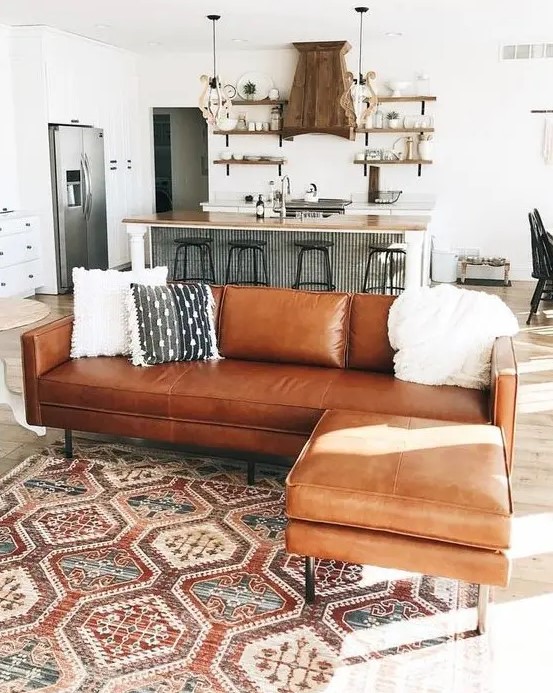
A brown leather corner sofa used as a space divider for an open layout of a kitchen and a living room.
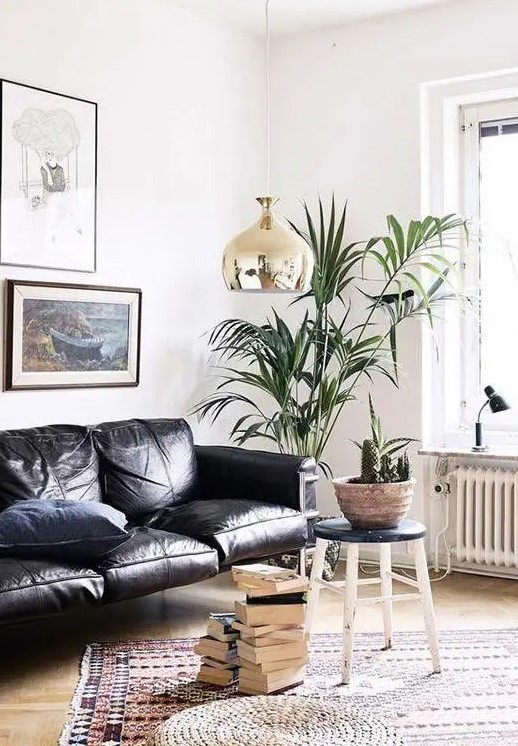
A gorgeous contemporary living room with a black leather sofa, stacks of books, potted plants and a chic gallery wall.
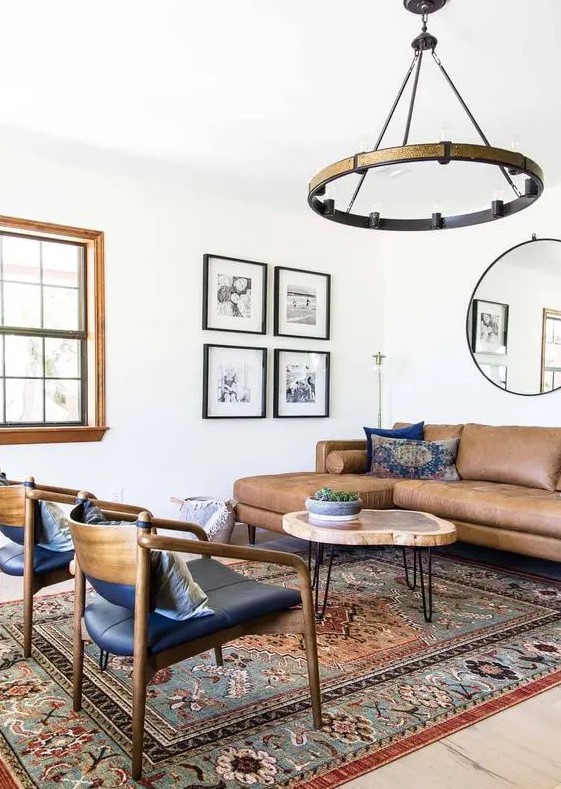
A mid-century modern living room with a brown leather sectional, a round coffee table, black chairs, a boho printed rug.

A modern neutral living room with a fireplace, a brown leather Chesterfield sofa, matching ottomans, a black chandelier and a glazed wall.
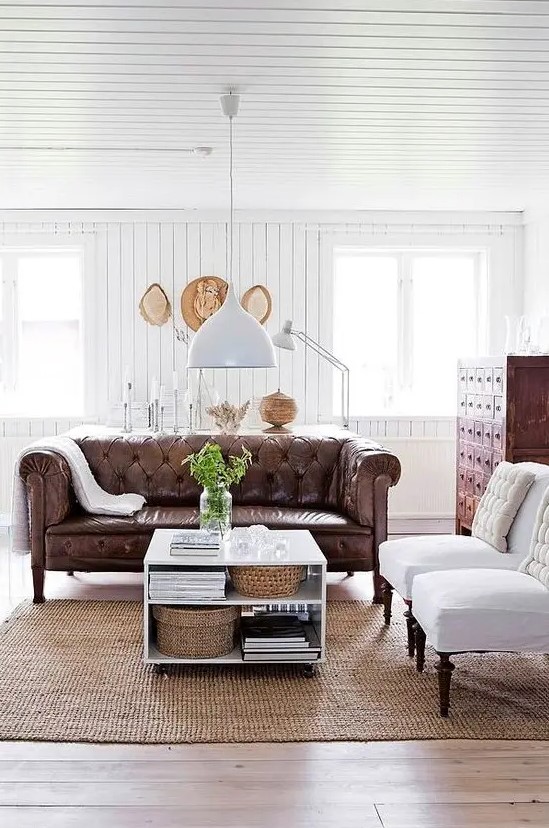
A refined rustic living room with a brown leather Chesterfield sofa, a vintage apothecary cabinet and white chairs.
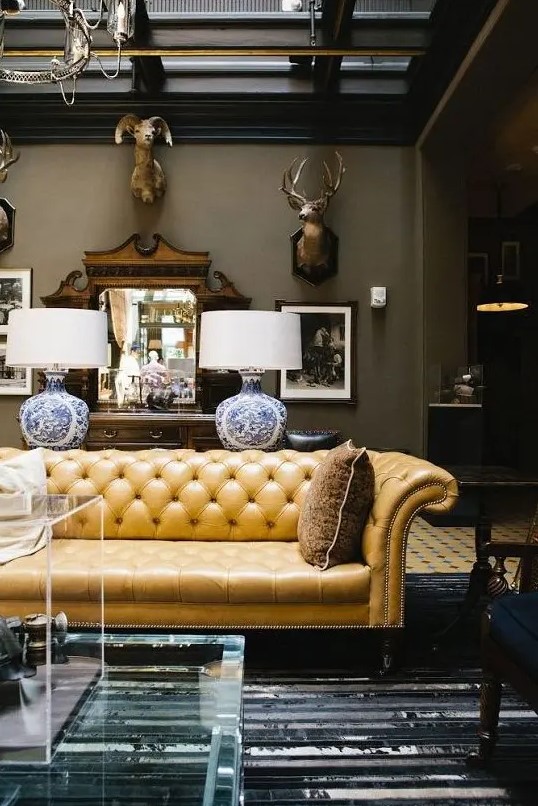
A sophisticated living room with a yellow leather Chesterfield sofa, taxidermy, plexiglass items and refined lamps.
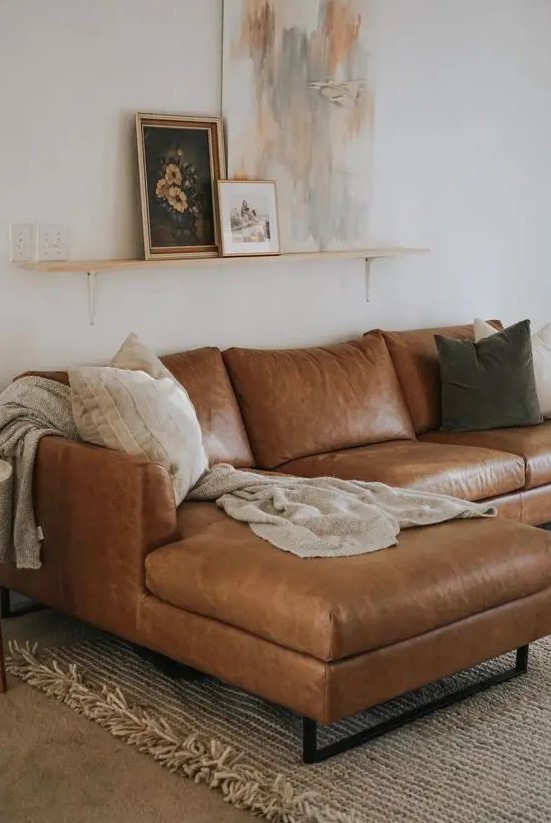
A stylish corner brown leather sofa with various pillows will become a staple of your living room.

An elegant mid-century modern living room with a black leather sofa, black chairs, curved plywood furniture and a potted plant.
Pros of Leather Upholstery
Leather does not absorb liquids, which means you can simply clean it by wiping the surface with a soft cloth. Leather upholstered furniture is durable, easy to maintain, and can for several years. Since it doesn’t stain easily, this common upholstery fabric is a smart choice for those who have young children and/or pets at home. If needed, you can simply buff or polish it at home to restore its shine.
Cons of Leather Upholstery
Leather is a relatively hard material. Therefore, it may not be as comfortable as many other upholstery fabrics. It is usually tanned through a series of chemical processes, which is why it can become brittle and crack when exposed to harsh weather conditions. The material can be easily damaged with a sharp object, such as a pair of scissors or even the nib of a pen. Good quality leather upholstered furniture is generally very expensive.
Polyester
Polyester is considered one of the best upholstery fabrics owing to its soft texture, durability as well as a wide range of colors and designs. It is a popular synthetic material commonly used for upholstery in upscale and posh homes. It is usually blended with other natural or synthetic fabrics when used for upholstery. Polyester is also a heavy-duty material, making it the best fabric for sofa upholstery in households with a lot of members.
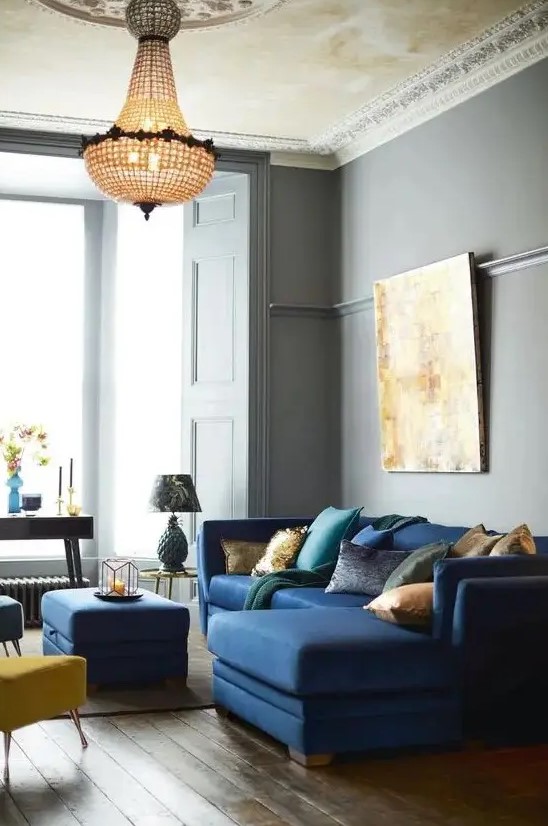
A beautiful and refined living room with grey walls, a navy mid-century modern sectional, a navy pouf and yellow and blue stools, a crystal chandelier and a statement artwork.
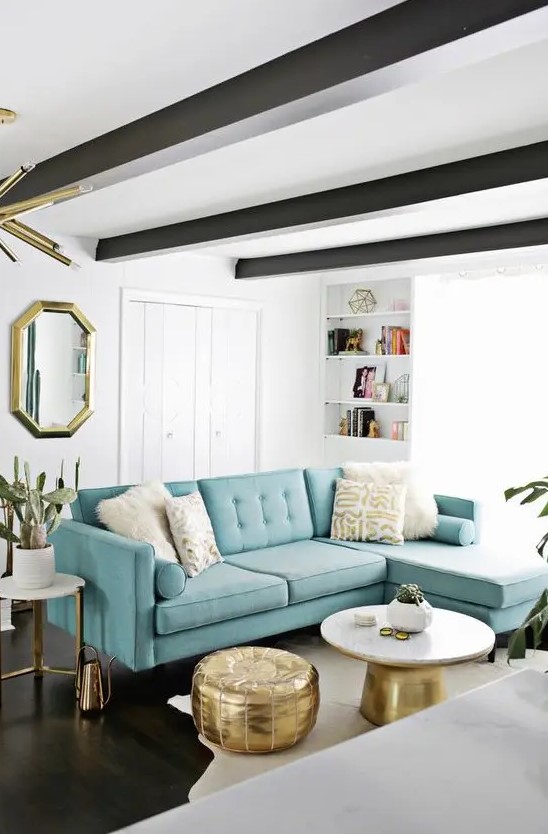
A beautiful mid-century modern living room with a fireplace, dark beams on the ceiling, a modern turquoise sofa and touches of gold for more elegance.
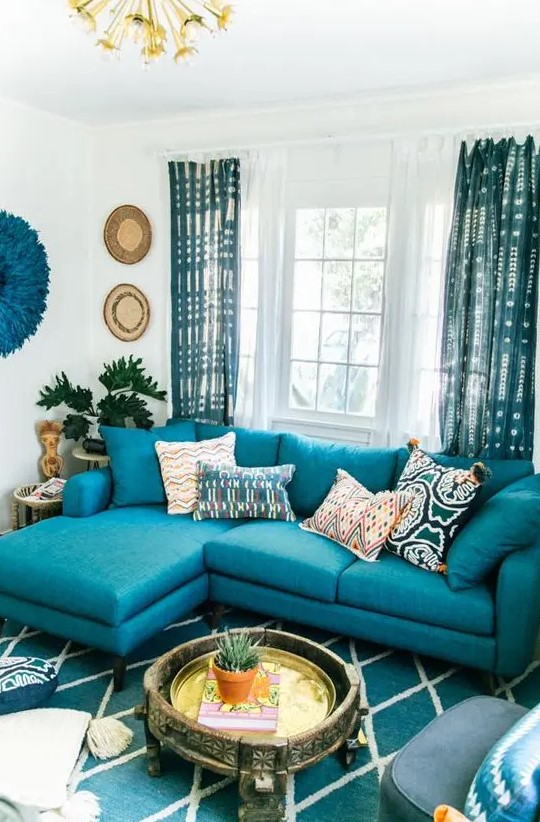
A bright living room with a turquoise sofa, a turquoise printed rug and curtains, decor on the wall and a carved wooden coffee table.
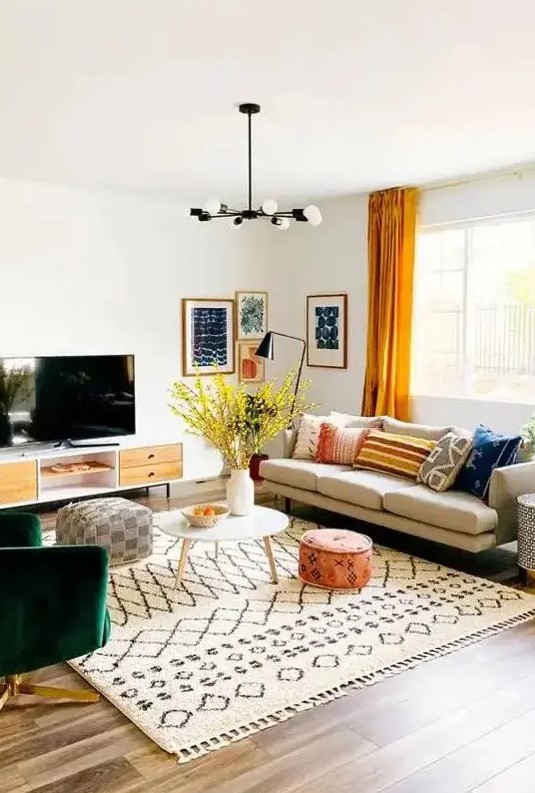
A bright mid-century modern living room with a comfy sofa, a green chair, a TV unit, printed textiles and a bright gallery wall.
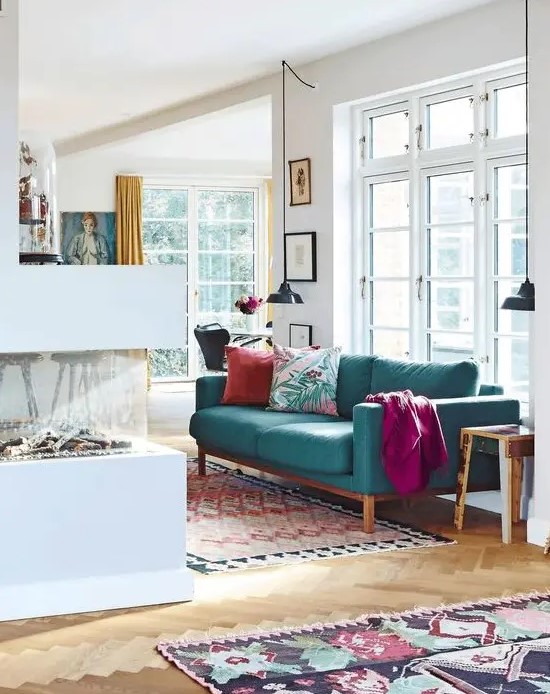
A contemporary living room with a fireplace, a modern turquoise sofa and bright textiles, pendant lamps and printed mini rugs.
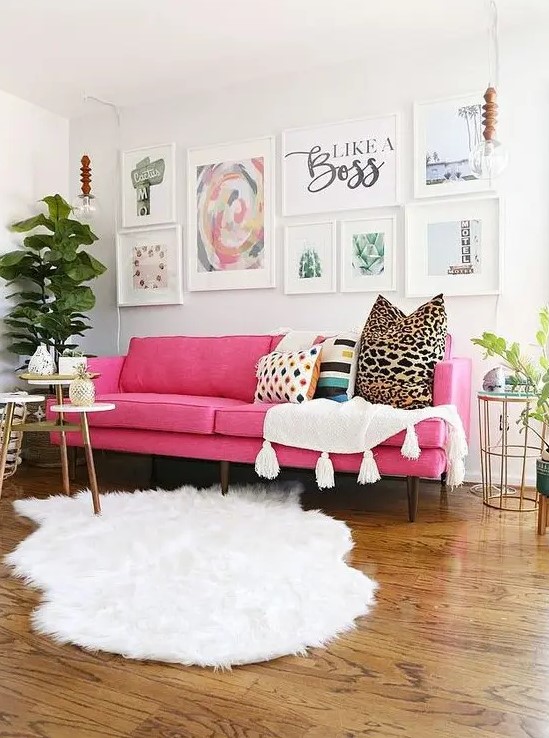
A lovely modern living room done in neutrals, witha pink sofa, an airy gallery wall, white textiles, potted plants and some tables.
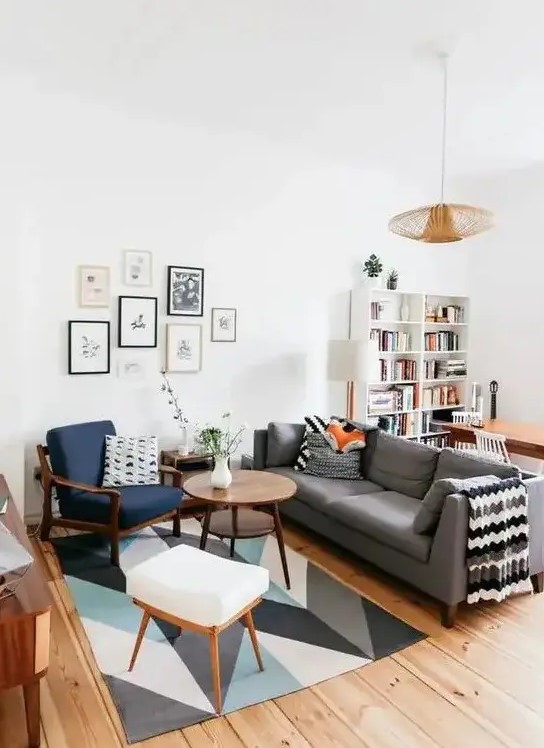
A mid-century modern living room with a bold printed rug, a grey sofa, a navy chair and a white stool, a cool gallery wall.

A mid-century modern to boho living room with a black brick fireplace, a blue sofa, a turquoise chair, bright pillows and rugs, some potted plants.

A pretty living room with a modern turquoise sofa, a modern storage unit, a coffee table and touches of gold here and there.

An eclectic living room with a mid-century modern turquoise sofa, a rough wooden table, a chair, a wooden dresser and some mirrors on it.
Pros of Polyester Upholstery
Polyester is one of the most durable upholstery fabrics. It will last you for several years. The material is soft to touch, which makes it comfortable to use for the upholstery. Polyester upholstered furniture is easy to clean in case of liquid spills. This fabric is also relatively more stain-resistant. It does not absorb smells and dries very quickly after washing.
Cons of Polyester Upholstery
Polyester upholstery can be flammable. It is particularly vulnerable to harsh weather conditions and heat. Polyester fabric is not very eco-friendly. This material has the tendency to absorb perspiration and bodily oils.
Linen
Linen is one of the most breathable fabrics on the list, making it a perfect choice for summer home décor. Basically, if you want your living room to look casual and laid back yet stylish and graceful, you may want to consider opting for linen upholstery.
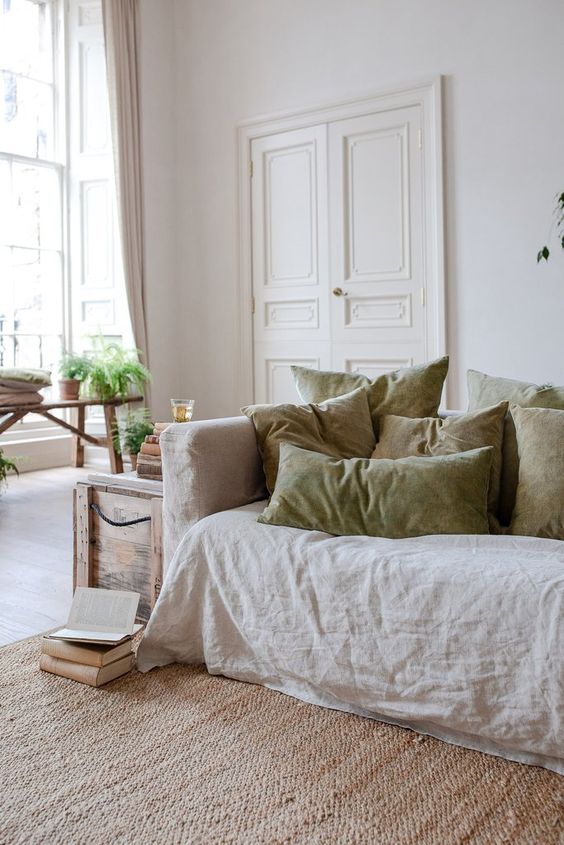
A neutral living room with a linen sofa and matching green linen pillows, a chest, a bench with greenery and a jute rug.
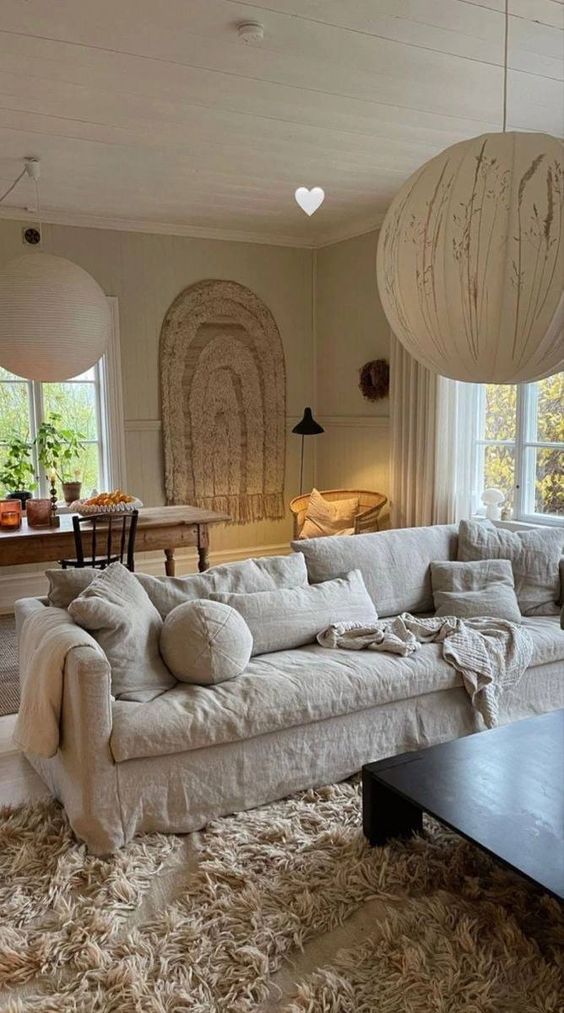
A catchy neutral living room with a linen sofa and pillows, a dark-stained coffee table, a fluffy rug, a wooden table and sphere pendant lamps.
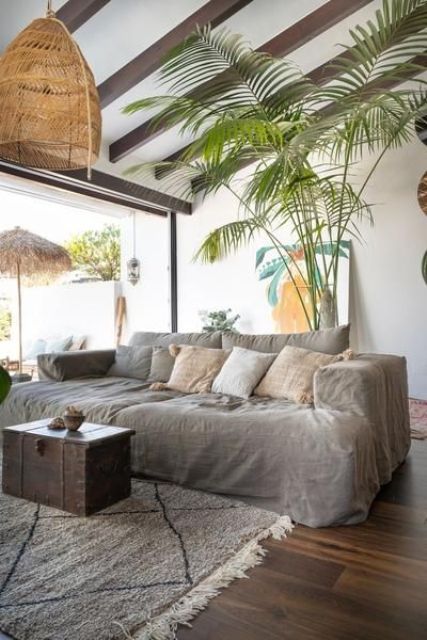
A tropical living room with a grey linen sofa and pillows, a dark-stained chest, woven lamps and a bold artwork.
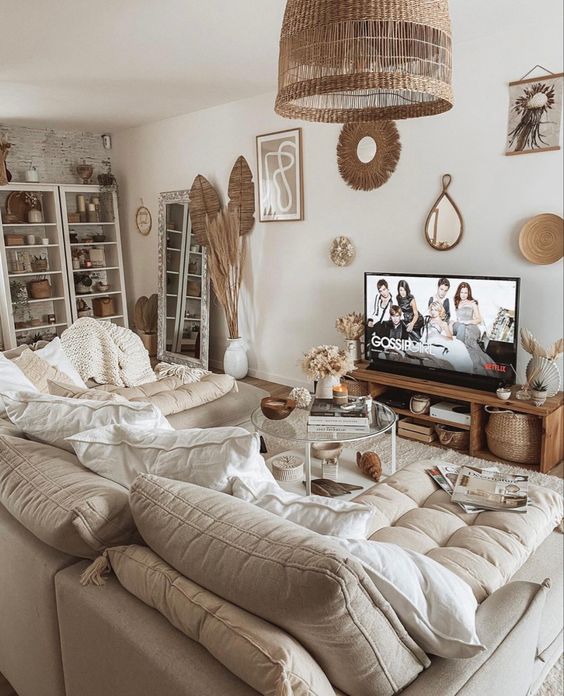
A neutral boho living room with shelves for storage and display, with fronds, woven touches, a neutral linen sofa with pillows.
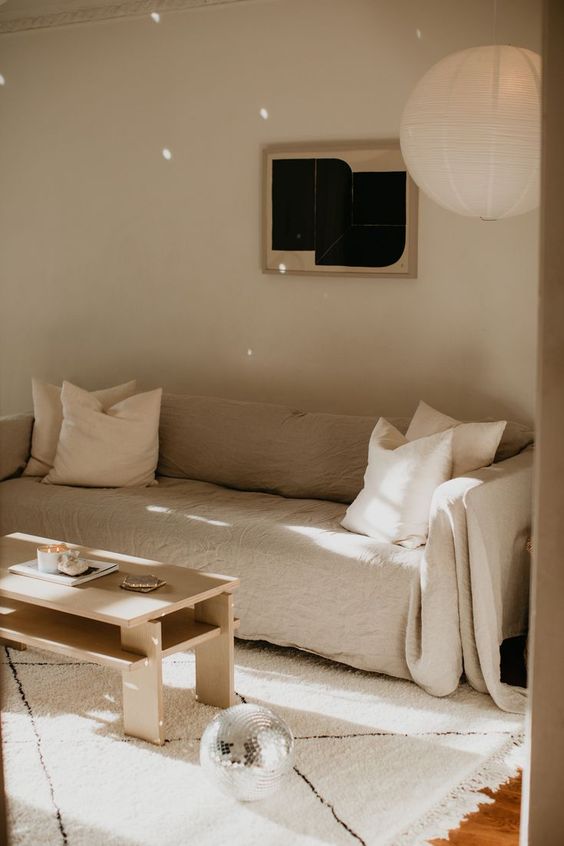
A neutral minimal living room with a linen sofa and pillows, a tiered coffee table, a disco ball and some decor.
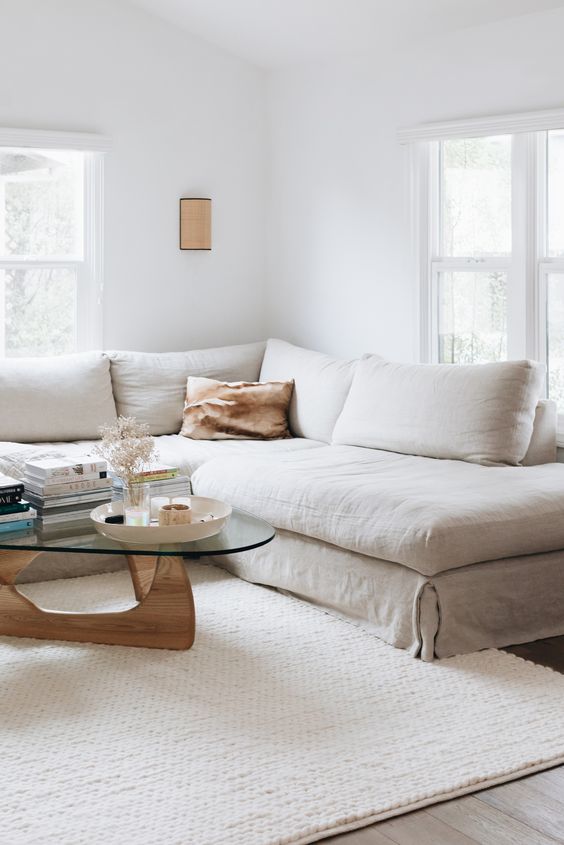
A neutral living room with a linen sectional and linen pillows, a coffee table with decor and books.
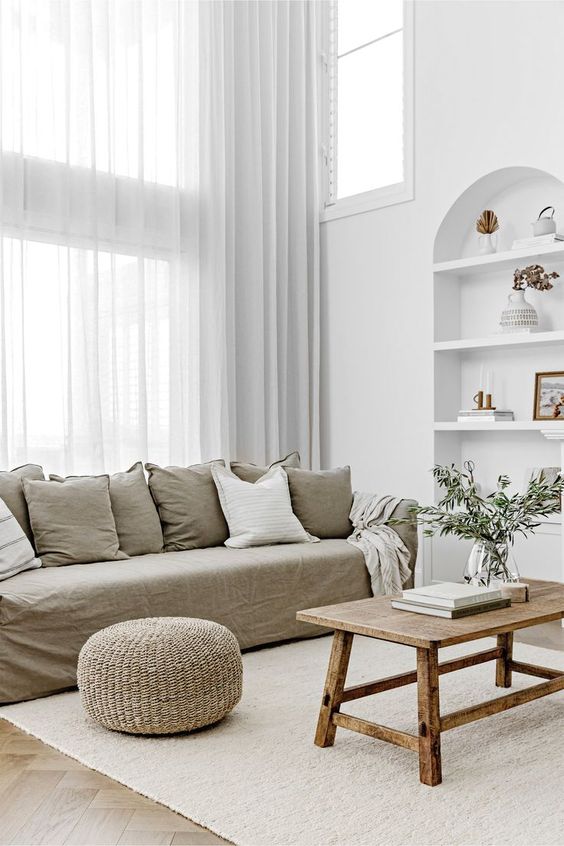
A neutral living room with a grey linen sofa and pillows, a stained table, a niche with shelves, a jute pouf and greenery.
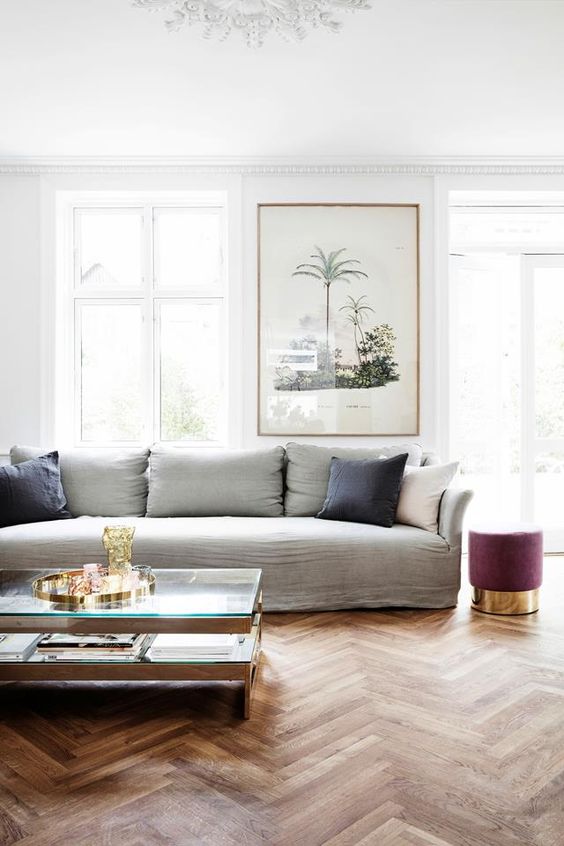
A chic living room with a grey linen sofa and pillows, a mauve pouf, a tiered coffee table and a bold artwork.
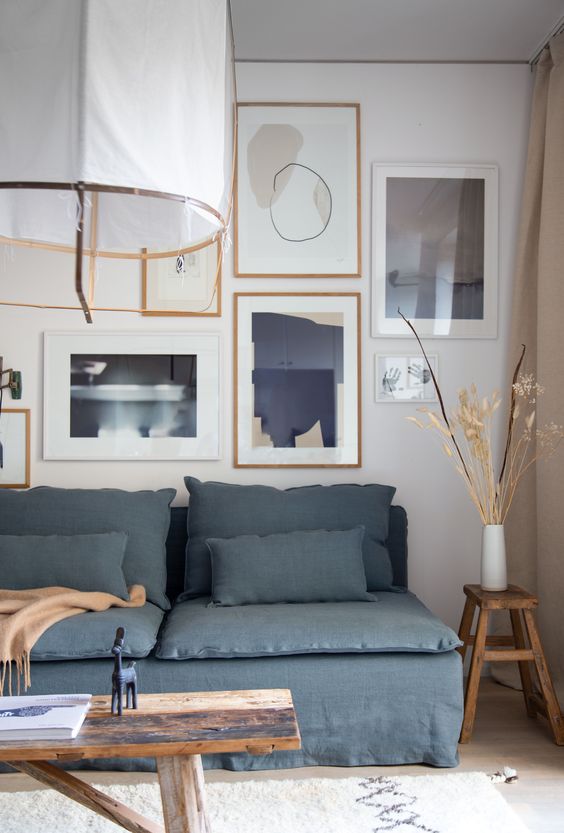
A coastal living room with a blue linen sofa, a bench with decor, an abstract gallery wall and a pendant lamp.

A chic mid-century modern living room with a black linen sofa, a tiered trolley, a rug, some chairs and a mini gallery wall.
Pros of Linen Upholstery
It is a relatively sustainable and eco-friendly upholstery material. The natural fibers in linen upholstery allow your skin to breathe. Linen upholstered furniture is easy to clean and maintain. Owing to its softness, linen is one of the most comfortable fabrics for upholstery. The soft upholstery fabric is resistant to mold and mildew, making it a perfect choice for people with allergies. Linen upholstery is quite affordable.
Cons of Linen Upholstery
Linen lacks elasticity and gets wrinkled rather easily. For a smoother look, you need to press the fabric, which can be both time-consuming and tedious. It is not a very durable fabric and be damaged pretty easily. The material is not resistant to stains and smells. It also absorbs liquid spills almost immediately.
Cotton
Whether you want a casual look for your furniture or want it to look formal yet modern, cotton is generally a good choice for both washable slip-on covers as well as upholstery. Available in different qualities and grades, this fabric is easy to dye and has a soft texture. Cotton is usually blended with other natural or synthetic fibers to increase its durability.

An elegant living room with a hot pink tufted sofa, a low table, a wooden sideboard and lots of potted plants in the balcony.
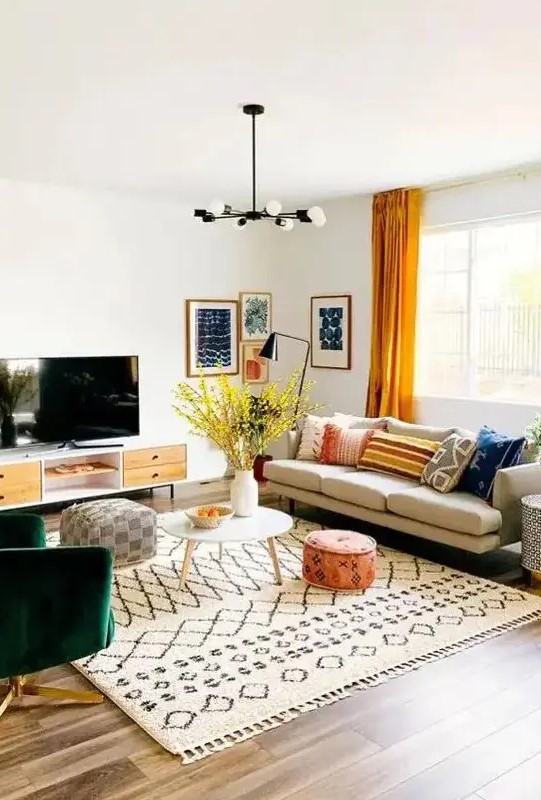
A bright mid-century modern living room with a comfy sofa, a green chair, a TV unit, printed textiles and a bright gallery wall.
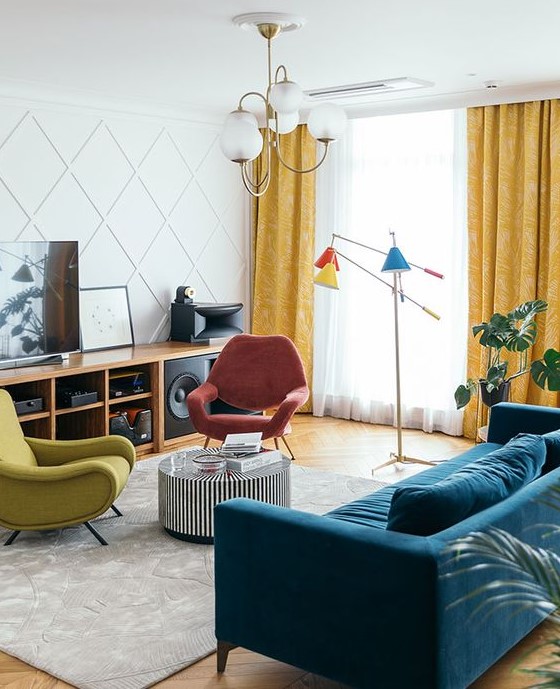
A bright mid-century modern living room with a stained storage unit, a coral and mustard chair, a navy sofa, a side table and colorful lamps.

A refined living room with tall windows, a light green cotton sectional, a duo of coffee tables, a couple of chairs.

A mid-century modern living room with a bold printed rug, a grey sofa, a navy chair and a white stool, a cool gallery wall.

A modern boho living room with a neutral cotton sofa, printed rugs, a bookshelf, a glass coffee table, black pendant lamps and potted plants.

A Scandinavian living room with a stained trestle desk, a grey mid-century modern cotton sofa, a stained coffee table and a gallery wall.
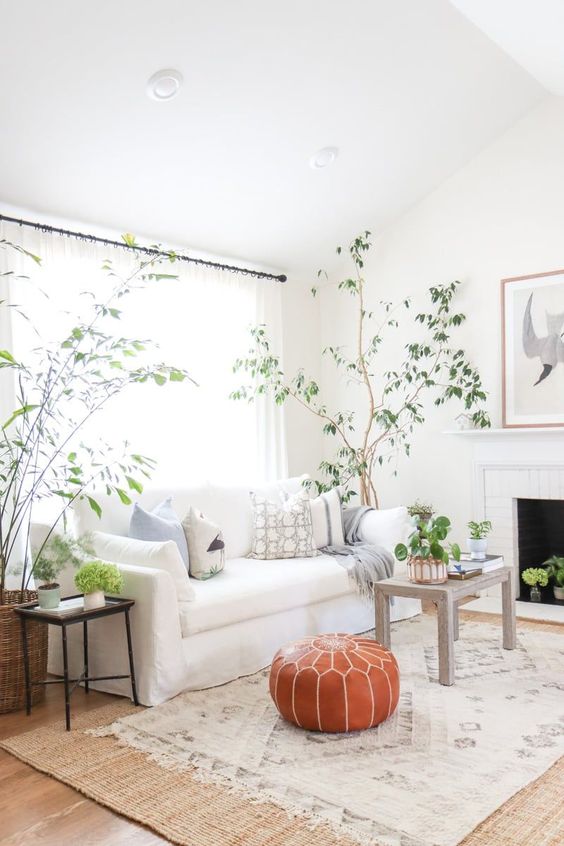
A chic neutral living room with a fireplace, a white cotton sofa by IKEA, a wooden table, an amber leather pouf and greenery.
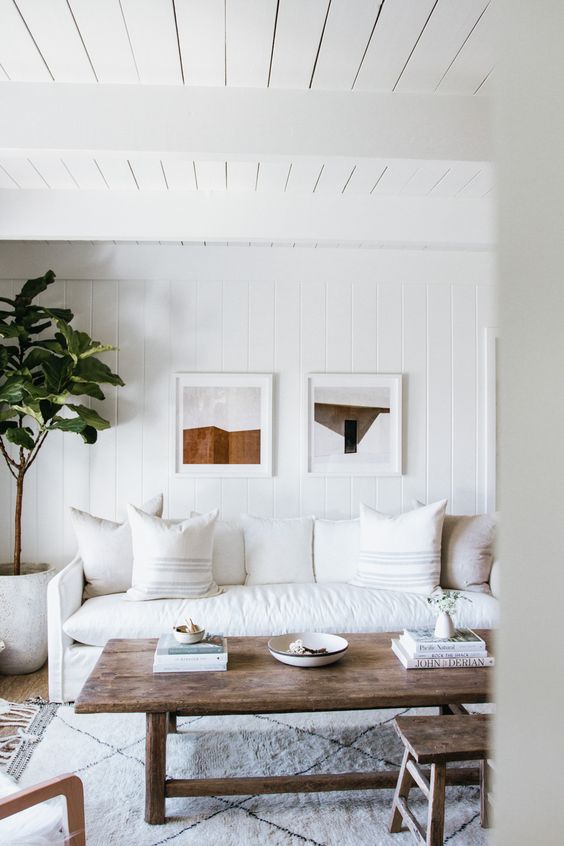
A neutral living room with a white cotton sofa and pillows, a stained coffee table and a stool, a potted tree and a mini gallery wall.

A beautiful neutral living room with built-in shelves with decor, a white cotton sofa, a wooden coffee table and rattan chairs.
Pros of Cotton Upholstery
This common upholstery fabric can be dyed in any color imaginable. Cotton upholstered furniture boasts a soft texture, which makes it extremely comfortable. It is a breathable material and allows air to circulate. Cotton is generally resistant to abrasions, mildews and pests. It is an ideal upholstery choice for people with sensitive skins. The fabric is completely washable.
Cons of Cotton Upholstery
Much like linen, pure cotton also lacks elasticity and tends to wrinkle easily. It can absorb spills, stains and even smells rather quickly. Cotton is not as durable as polyester, leather and other common upholstery fabrics on the list.
Olefin
Olefin is a petroleum-based synthetic fiber that is widely used in furniture upholstery, carpeting, wallpapers and car seats. It is a sturdy and durable material that looks and feels like wool, making it soft and comfortable. If you are looking for a low-maintenance upholstery fabric that will last you a long time, then olefin is probably your best bet.

A neutral living room with a grey olefin sectional, a coffee table, an amber leather chair and some decor.
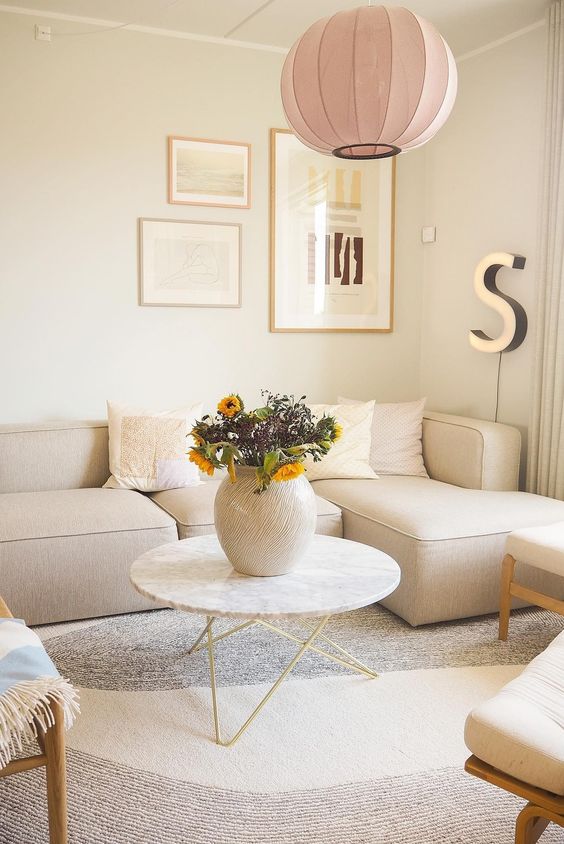
A neutral living room with a low olefin sofa, a coffee table, neutral chairs, a gallery wall and a pink pendant lamp.
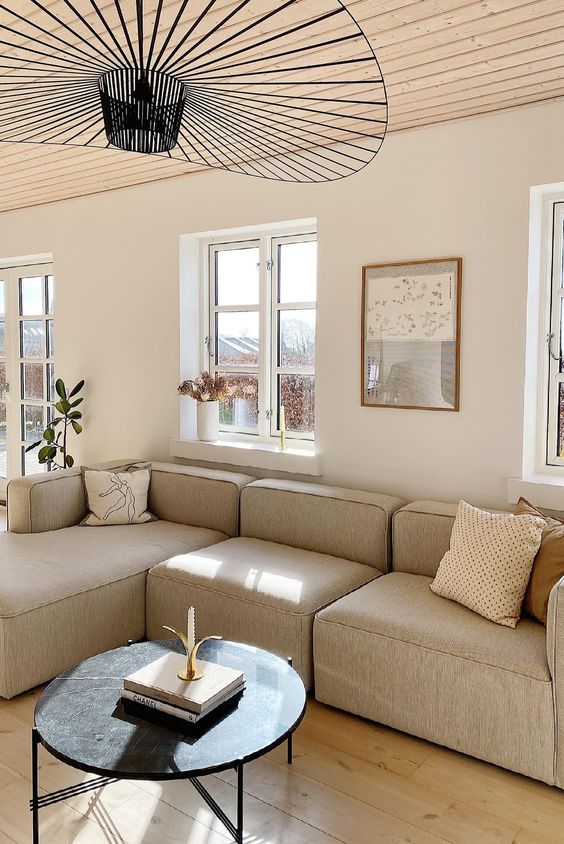
A stylish neutral living room with a grey olefin sofa and pillows, a black coffee table, a black pendant lamp and some art.
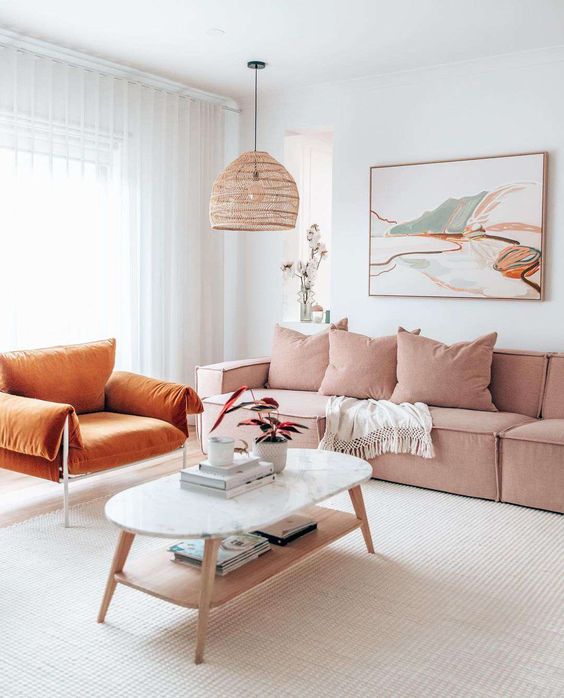
A bright living room with a pink olefin sectional, a rust-colored chair, a tiered coffee table and a bold artwork.
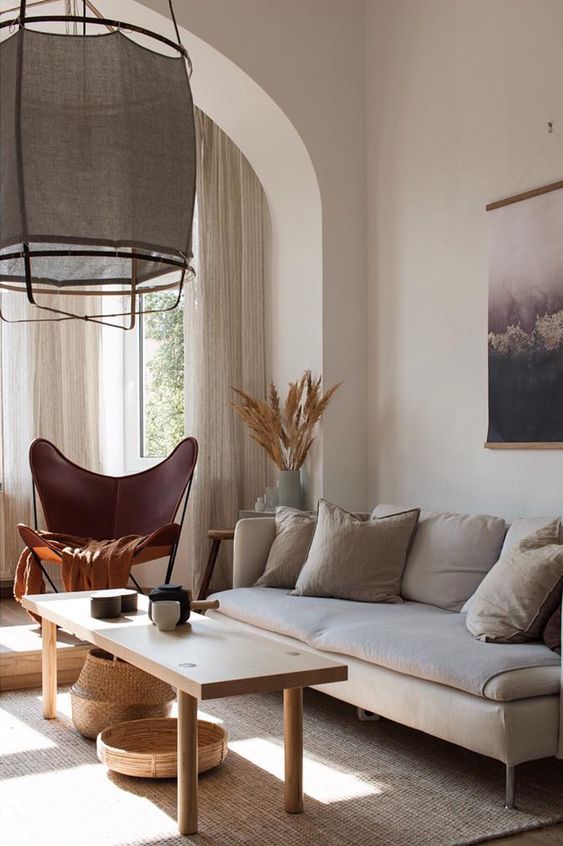
A boho living room with a neutral olefin sofa, a wooden table, a burgundy butterfly chair, a pendant lamp and some art.
Pros of Olefin Upholstery
Since it is made from melted plastic pellets, olefin is resistant to general wear and tear. Olefin upholstered furniture does not stain easily. It is resistant to abrasions, mildew and discoloration. This synthetic fabric is also resistant to water. Olefin upholstery is easy to clean and maintain.
Cons of Olefin Upholstery
Owing to its composition, olefin upholstery is particularly vulnerable to light and heat. You won’t be able to find much variety in terms of colors and designs. It can get brittle if exposed to harsh sunlight for a long period of time.
Velvet
Velvet sofas and chairs can add a touch of extravagance and luxury to your home décor. Also, contrary to popular belief, velvet furniture can last several years if treated and maintained properly.
It is a densely tufted pile fabric and has two main types: traditional and synthetic. While the traditional velvet is made from silk and is generally more expensive, the synthetic one is made primarily from synthetic fibers such as viscose, polyester and rayon. Synthetic velvet is relatively less costly and more durable than its traditional or natural counterpart.

A beautiful eclectic living room with a black velvet sectional, a tree slice coffee table, a tropical print, a crystla chandelier and a statement plant.

A bright boho living room with a green wall and a gallery wall, a yellow velvet sectional, a retro chandelier and a black round table.
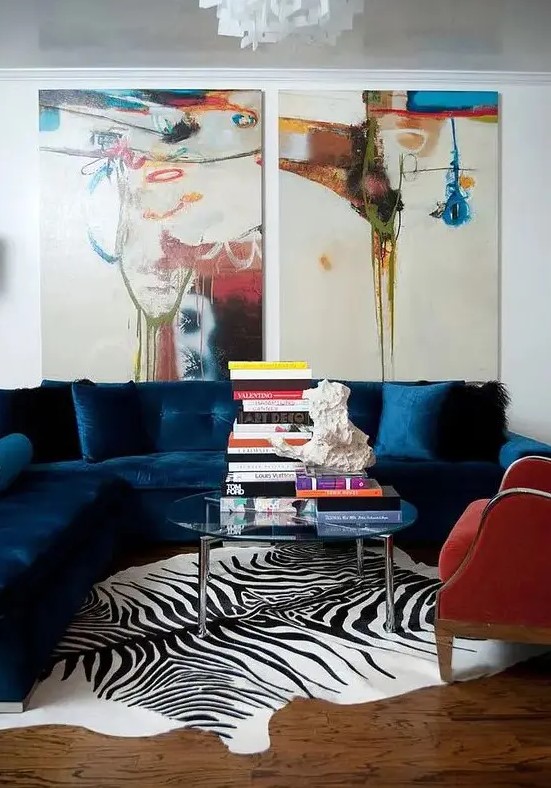
A bright living room with a navy sectional, a red chair, a clear glass coffee table, bold artwork and a zebra print rug is amazing.

A bright living room with pink walls, a green velvet sofa, a chic coffee table and layered printed rugs plus a mini gallery wall.
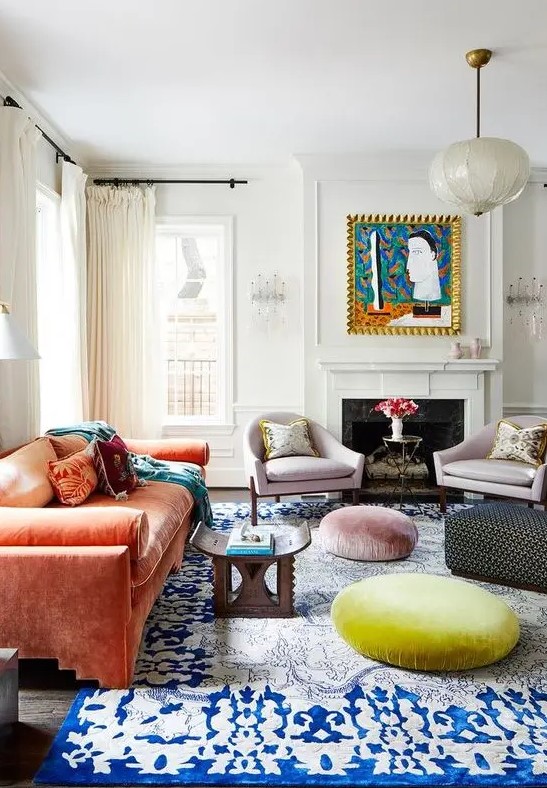
A colorful eclectic living room with a fireplace, lilac chairs, an orange velvet sofa, Moroccan furniture, a rug and poufs is bold.

A cozy mid-century modern living room with a navy velvet sectional, an acrylic coffee table, a metal chair, a shelf with lights and some pillows.
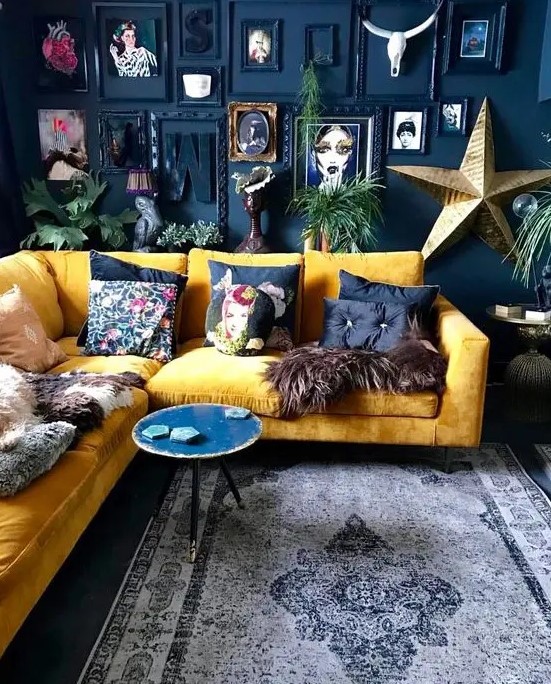
A dramatic living room with a navy accent wall, a bold gallery wall, a yellow sectional and bright pillows plus a round table.
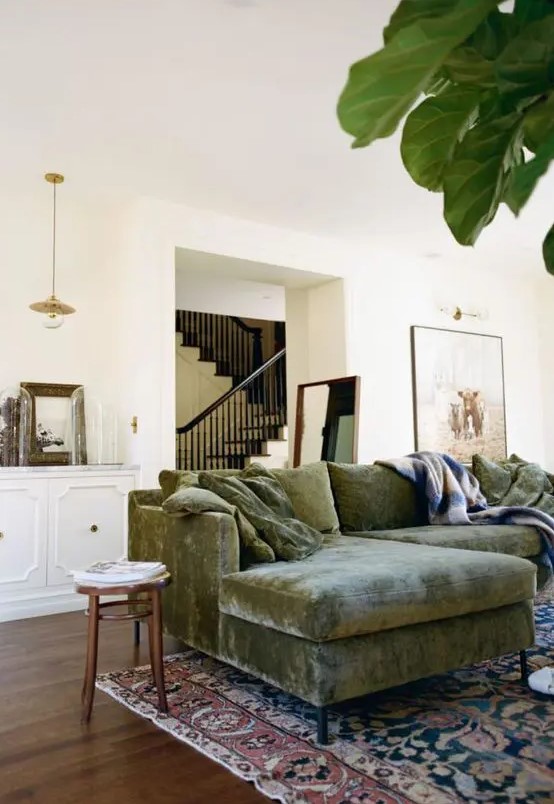
A farmhouse living room with a green velvet sectional, a boho printed rug, a white credenza with some decor and stained stools.

A maximalist living room with a colorful gallery wall, a rust-colored velvet vintage sofa, a round table and potted plants.
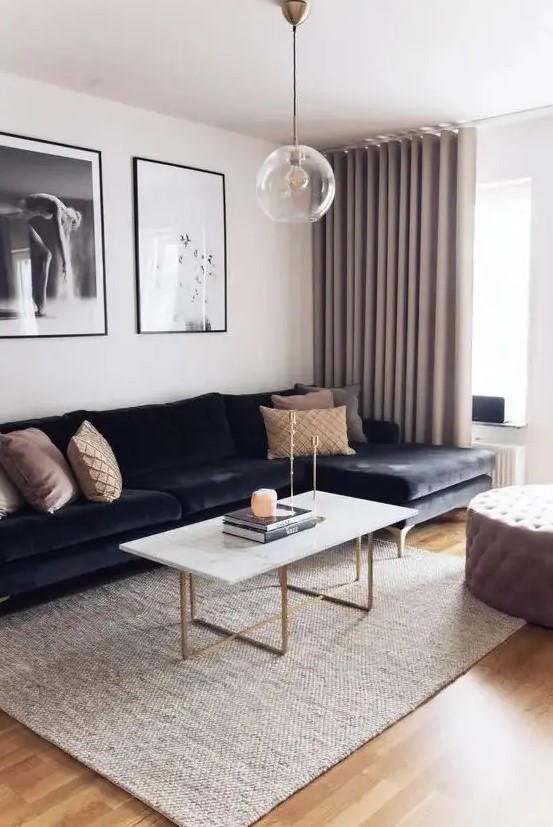
A refined living room with a black velvet sectional, a coffee table with gold legs, a tufted ottoman, a gallery wlal and greige curtains.
Pros of Velvet Upholstery
Velvet upholstery can last for decades if treated with care and love. You don’t have to worry about discoloration as the color of your velvet upholstered furniture won’t fade away with time. This material is both aesthetically pleasing and soft to touch. This common upholstery fabric is available in various colors. Food and mud stains can be easily removed from velvet furniture.
Cons of Velvet Upholstery
Velvet is prone to attract dust particles, which is why it needs to be cleaned regularly. The same goes for pet fur. It is not suitable for outdoor use, as velvet does not fare well under direct sunlight. Velvet upholstered furniture can absorb liquid spills rather quickly.
Wool
Wool may not be a common choice, but it is undoubtedly one of the best fabrics for upholstery. Compared to linen and cotton, wool tends to look more formal and elegant. In addition to that, this natural fabric is quite comfortable and soft. Wool upholstered furniture can also make your home look warm and cozy. Usually, when it comes to upholstery, wool is blended with synthetic fibers to make it more durable and long-lasting.
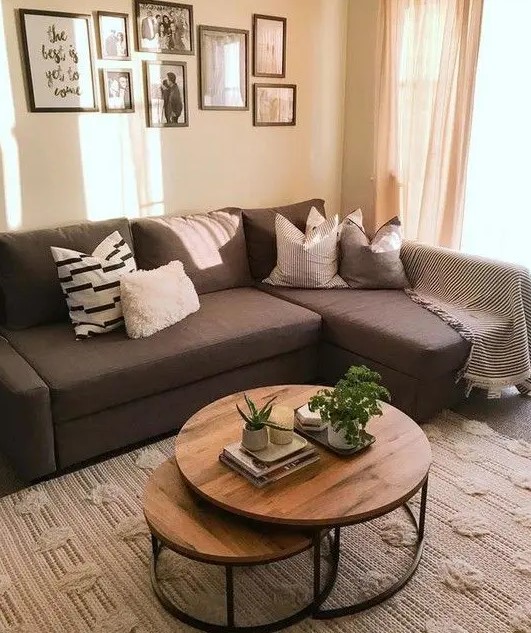
A farmhouse living room with a brown sectional, a duo of coffee tables, a black and white gallery wall is cool.
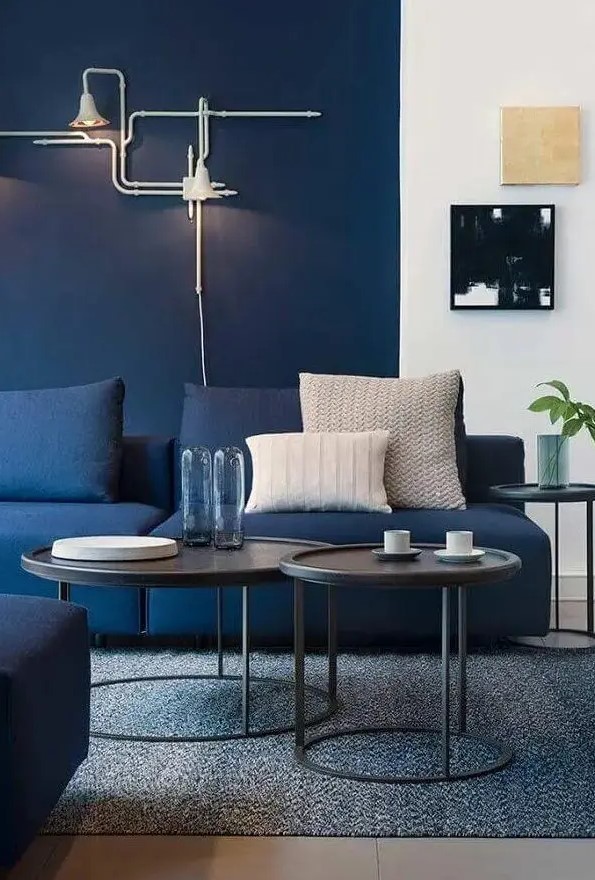
A bright modern living room with navy walls, navy sofas, black side tables and cool art, unique industrial-inspired sconces.

A chic and stylish living room with green walls, a navy loveseat, grey chairs, a glass coffee table and a bold and contrasting artwork.
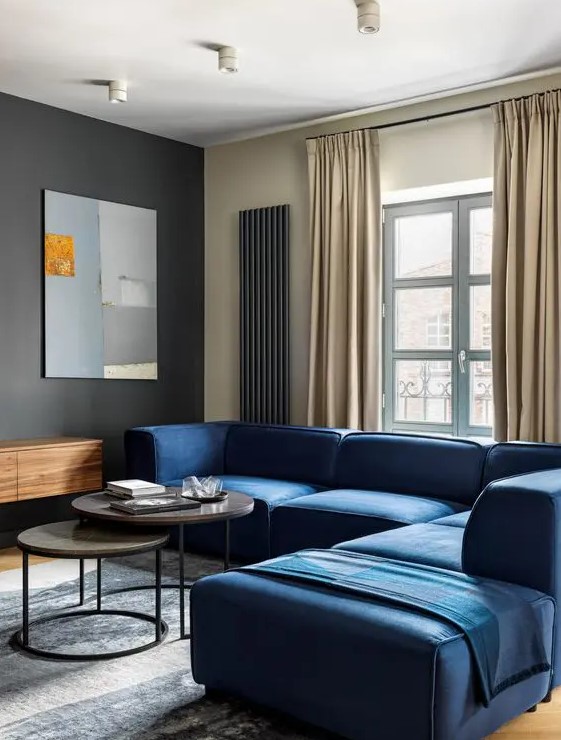
A minimalist living room with a black accent wall, a navy sofa, round tables, a floating credenza, neutral curtains and a pretty artwork.
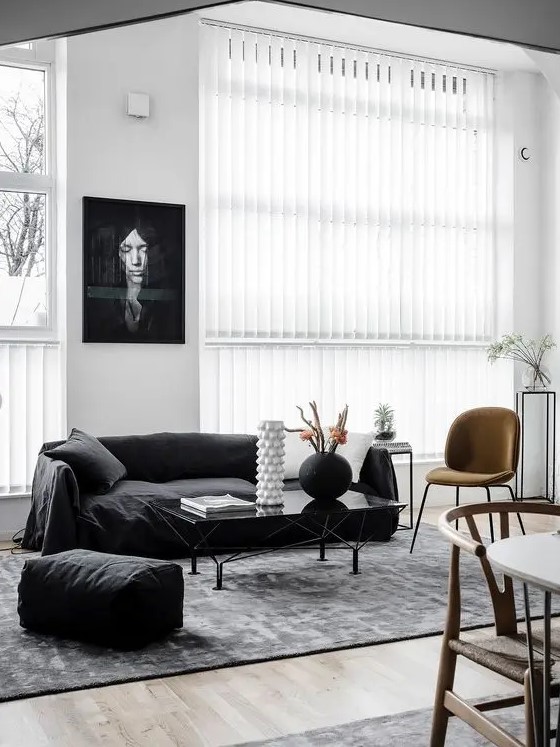
A chic Scandi living room with a black sofa and a pouf, a rust chair and a glass coffee table and some plants.
Pros of Wool Upholstery
Wool upholstered furniture is comfy, durable and hardwearing. Being a natural fabric, it is quite sustainable and environment friendly. Wool is resistant to flames and effectively repels moisture. It is also resistant to mold, mildew and other allergens, making it a healthy choice for all households. Stains don’t form easily on wool.
Cons of Wool Upholstery
Wool is more expensive than most other natural and synthetic fabrics. You won’t be able to find a lot of variety to match a particular style. It can only be dry cleaned. These are all pros and cons of the most popular sofa upholstery types, get inspired!

